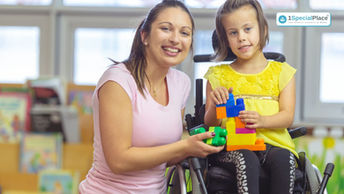All Posts


Is Stuttering a Disability? Understanding the Facts
Stuttering, often misunderstood as a minor speech hiccup, is actually a complex communication disorder that affects the fluency and rhythm of speech. Characterized by involuntary repetitions, prolongations, or speech blocks, stuttering impacts millions of people across the world both children and adults. While occasional disfluencies like “uh,” “you know,” or “umm” are part of normal speech, frequent and persistent disruptions can indicate stuttering. Beyond speech itself, st
1SpecialPlace
6 min read


Understanding the Disability Certificate
The Disability Certificate is a document that serves as proof of a person's disability . It may also be referred to as the PwD certificate, PH certificate, or handicap certificate. This certificate, along with an identity card, is crucial for individuals with disabilities of more than 40%. It enables them to access various facilities, benefits, and concessions available under different schemes. Defining Disability The World Health Organization (WHO) defines disability as "an
1SpecialPlace
5 min read


News of the month November 2025
News of the Month November 2025 brings a compelling collection of stories, breakthroughs, and inspiring moments from the world of disability inclusion, neurodiversity, healthcare, and education. This News of the month shines a spotlight on children and young adults taking the lead from art exhibitions and kitchen takeovers to national sports championships showcasing their talents, resilience, and creativity. Alongside these uplifting stories, November also highlights vital re
1SpecialPlace
8 min read


Vikaas Day Care Scheme For Person with Disability Children
Vikaas is a daycare program that was introduced by the Department of Empowerment of Persons with Disabilities, Ministry of Social Justice & Empowerment, Government of India. Its main goal is to give people with disabilities who reach the age of ten more opportunities to develop their interpersonal and vocational skills as they move into older age groups. During the PwD's stay in the Vikaas center, the Registered Organization (RO) center will also provide caregiving assistance
1SpecialPlace
3 min read


Do You Have a Voice Disorder?
Do You Have a Voice disorder Problem? Speech is the primary mode of communication for many people and therefore having a normal voice is critical for communicative efficiency. We all use our voices, probably even more than we realize, despite the perception that only professional voice users like singers and actors need to worry about their vocal health. Maintaining your vocal health should be a key priority whether you sing professionally, for pleasure in the shower, or are
1SpecialPlace
6 min read


News of the month October 2025
News of the Month October 2025 brings a wave of powerful stories and pivotal developments from across the disability, healthcare, and education sectors. This month highlights groundbreaking research, policy reforms, and heartwarming human stories that continue to inspire inclusion and innovation. From scientific milestones in speech and hearing sciences to nationwide efforts in special education and empowering individuals with disabilities, October has been a month of progres
1SpecialPlace
8 min read
